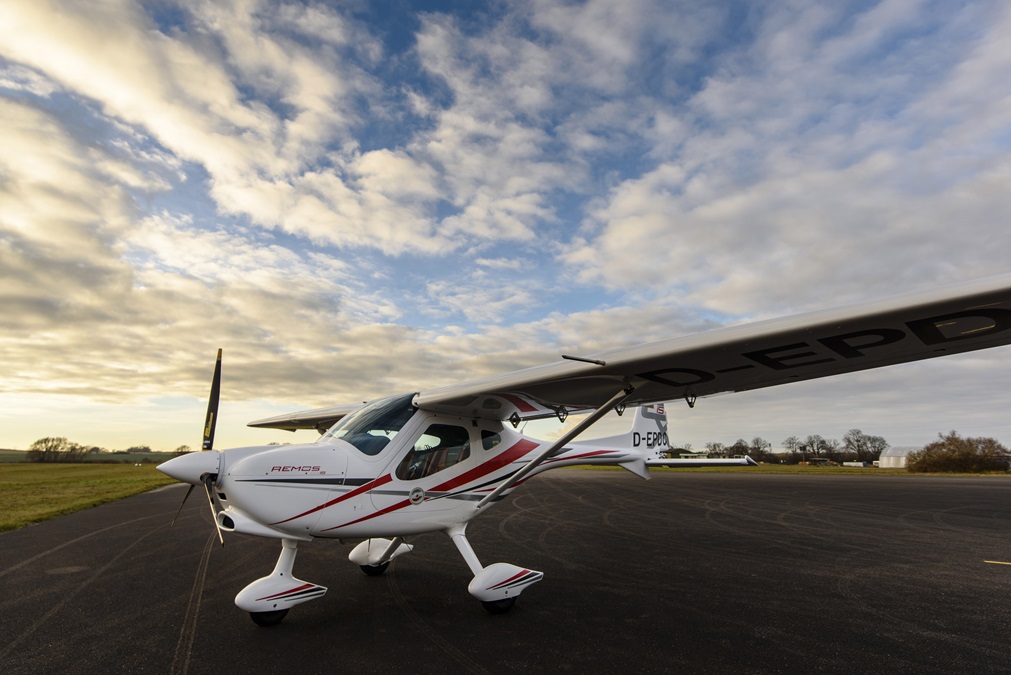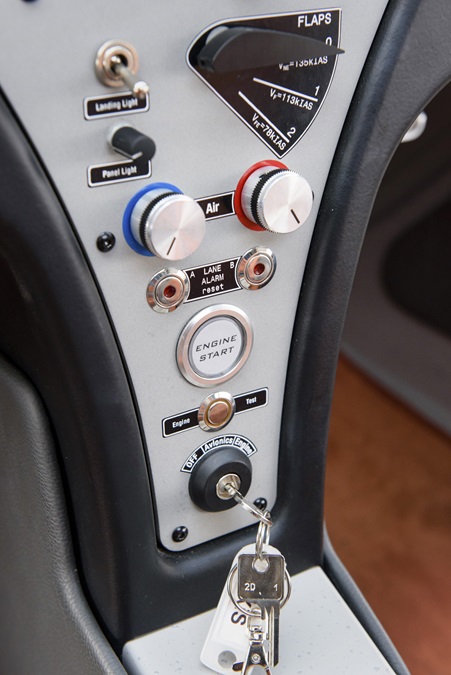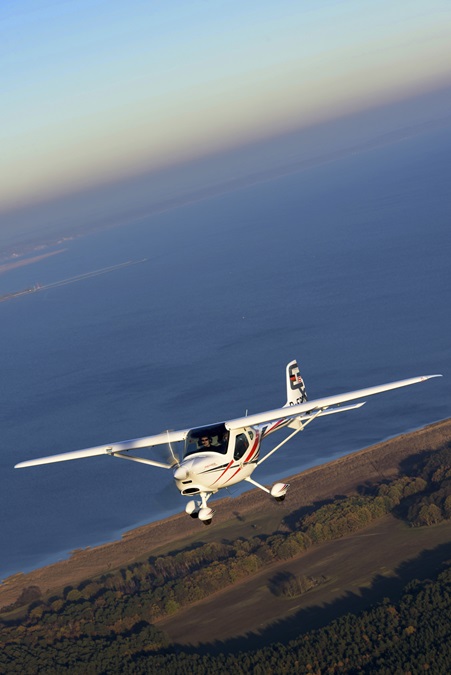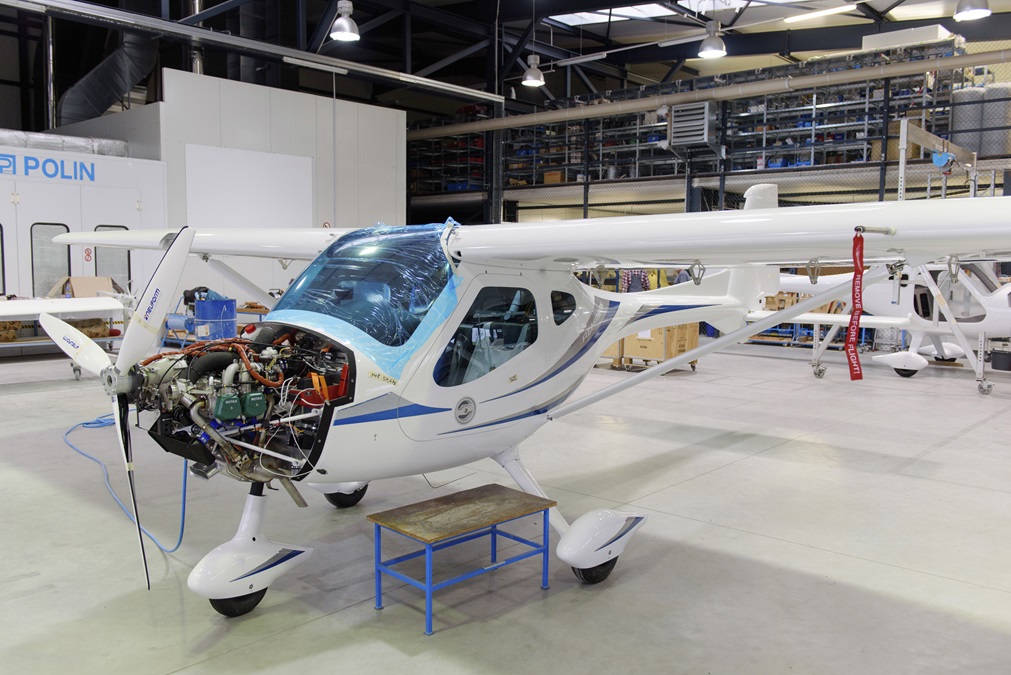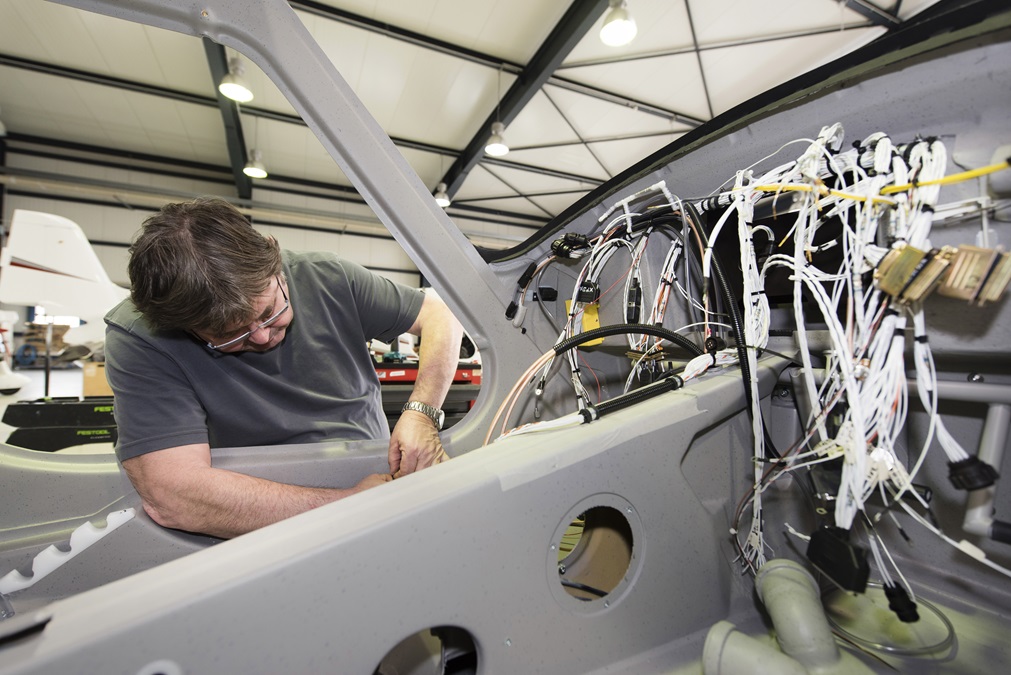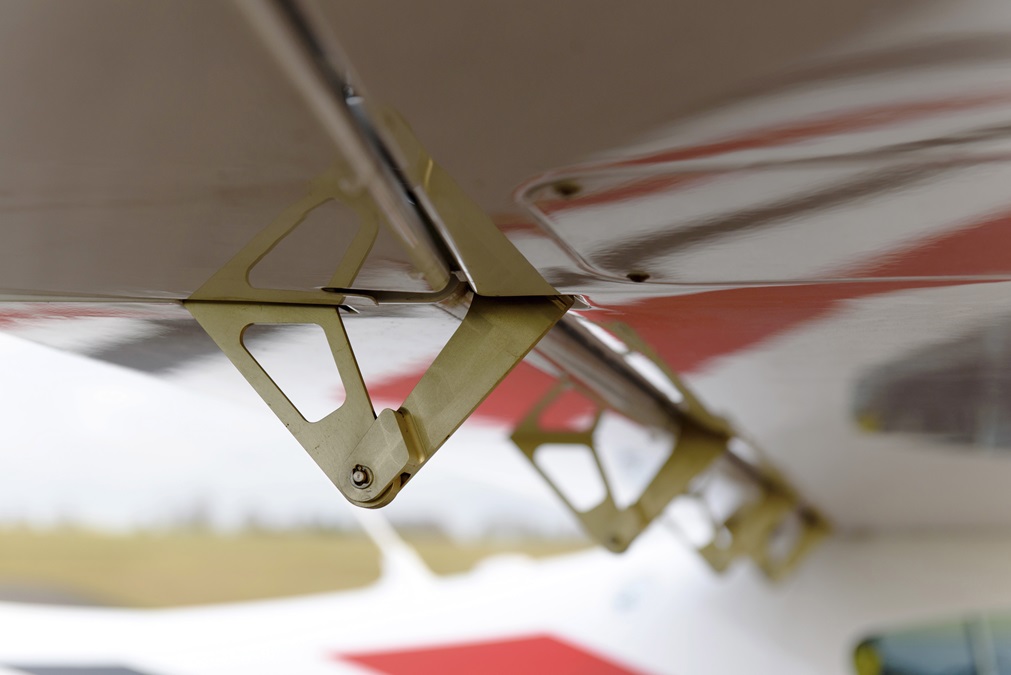Smart Attack
After a setback, Remos returns with the GXiS
Since the dawn of the Light Sport aircraft era, Remos AG has been the manufacturer that brings something extra to the party. Its latest addition is no exception.
Remos has been designing and manufacturing ultralight aircraft for the European market since 1997. The airplanes are built in a 32,000-square-foot factory in Pasewalk, Germany, a village about an hour north of Berlin.
The company entered the U.S. light sport market in 1997 with the introduction of the G3, a factory-made Special Light Sport Aircraft (S-LSA), and followed that up in 2009 with the GX.
The Remos stood apart with innovative features: a ballistic parachute; gull-wing doors that could be removed for a Cub-like flying experience; and a design that enabled the wings to be folded or removed altogether. Adding to its appeal, the GX could fit two heavier-than-FAA-standard adults and still carry 22 gallons of fuel, and boasted a 47-inch-wide cockpit. AOPA believed enough in the GX to make it its 2010 sweepstakes airplane. As of December 2015, there were 118 Remos aircraft registered in the United States, according to ByDanJohnson.com.
The LSA market didn’t take off as anticipated in the United States, and Remos ran into financial trouble in 2014. Now, after a reorganization, Remos is back with a new model that retains the company’s high-quality engineering and construction while raising the innovation bar once again.
‘More sophisticated’
On first glance, the GXiS resembles the GX. But there are subtle changes.
“We had to redesign the cowling,” said Daniel Browne, Remos senior vice president of certification. “The engine didn’t fit in the air system.” He referred to the 100-horsepower, four-cylinder Rotax 912 iS Sport.
The front air inlets, which had been incorporated into the top and bottom cowlings, have been replaced with one large scoop in the bottom cowling. “It looks more like an aircraft than an ultralight,” Browne said.
The fuel-injected 912 iS claims to reduce the Remos’s already-modest fuel consumption by another 10 percent, to 3.5 gallons per hour. The Rotax was designed to run on automotive fuel, or a fuel with up to 10 percent ethanol. The engine can run on 100LL, but the manufacturer recommends adjusting the maintenance schedule to check for lead oxide deposits on spark plugs and other parts of the engine.
The three-blade Duc Helices Flash propeller is ground-adjustable but, Browne said, is elastic in its power so as to offer a constant-speed effect. “You can set it for a higher cruise speed and you will still have excellent ground thrust and climb speed,” he said.
FADEC-like
Climb inside the GXiS and, once you maneuver your legs around the center stick, you’ll notice more differences. The quirky dual throttles are gone. Instead, the center console has a single throttle that is connected to the brake. On the ground, push forward for power; bring back to activate the brake (the Remos does not have toe brakes).
Remos developed a system it calls SMARTStart to fire up the 912 iS. Place the key in the first position, and the avionics power comes on so that you can set frequencies and check weather, or introduce new student pilots to the avionics.
Turn the key to the second position. This activates the engine master and the anticollision lights simultaneously.
Finally, press an engine start button located above the ignition key. This engages the electronic control units, the fuel pumps, and the starter.
The “smartification” of the GXiS extends to the engine and runup. In a process that more closely resembles full authority digital engine control (FADEC), the pilot pushes a button and then monitors the instruments as the system runs through standard checks. The runup checklist has been pruned from 15 items to eight.
Even the emergency checklist has been streamlined. In the event of an electrical failure, flip a switch to change the electrical system to the backup battery and disconnect nonessential items. For an engine failure, press the ignition button to try to restart. These innovations were intended to make flying the Remos as easy and as fun as possible, Remos spokesman Patrick Holland-Moritz said.
Beating the Oshkosh heat
Remos brought the GXiS to EAA AirVenture 2016. Chief Technical Officer Christian Majunke was sitting in a line of airplanes at Wittman Regional Airport, waiting his turn to taxi for takeoff.
The fuel-injected 912 iS claims to reduce the Remos’s already-modest fuel consumption by another 10 percent, to 3.5 gallons per hour.It gets warm in Oshkosh in July. Rather than let the GXiS’s Rotax engine get too warm while waiting on the ground, Majunke shut down the airplane.
“The marshallers were concerned that he was having engine problems,” said Browne. “When he was given permission to depart, he started up and took off.”
Pasewalk in November bears no resemblance to Oshkosh in July, but the Rotax starts up just as promptly. As we taxi and take off from the runway at Pasewalk, the GXiS displays the straightforward flying characteristics of previous models. The airplane rotates at about 40 knots and climbs at 1,000 feet per minute. The view from the curved canopy is expansive, and a skylight opens it up even further. As we turn toward the Baltic Sea, the airplane handles nicely—its center stick responsive but not twitchy. Stalls in the GX were straightforward with barely a hint of a buffet, and the GXiS exhibits the same behavior.
Keeping well clear of the restricted airspace at the border of Poland, we turn back toward Pasewalk, and Browne points out numerous landmarks flanking the airport—a silo, a hospital—to ensure we fly a proper pattern. Noise-abatement procedures are strictly enforced here. We enter the pattern at 4,000 rpm and add 10 degrees of flaps. Keep some power in almost to touchdown with full flaps, land at 60, and the Remos alights with grace.
Remos aircraft pull gliders in Europe, and you can purchase a glider-tow kit as an option if you wish. The airplane is much more fuel-efficient than a Piper Pawnee or similar aircraft, said Holland-Moritz.
The base price for the GXiS with Dynon SkyView seven-inch displays is $156,800. Add leather interior, 10-inch Dynon SkyView displays, a Garmin GTN 750, and other options, and the price increases to approximately $210,000. All new aircraft are equipped with ADS-B Out. ADS-B In traffic and weather can be displayed on the Dynon SkyView for an additional cost. The Glasair Merlin M-1, another new kid on the block, has a base price of $149,950, whereas the Bristell has a base price of $130,000. The Remos has many standard features, such as the ballistic recovery system, that its competitors offer as options, said Juergen Rehländer, sales manager. The use of high-quality, high-tech material such as carbon and aramid, avionics from Dynon and Garmin, and the unique features such as SMARTstart contribute to the higher price, he said.
Remos also offers models with fewer frills. The GX Club has a base price of $129,376 (that’s with a carbureted Rotax 912 ULS and a seven-inch Dynon SkyView display). The GXnXES starts at $139,986 with two training packages available.
At press time, Remos was in the final stages of ultralight certification of the GXiS in Germany, with U.S. S-LSA certification to come later in 2017.
Many Remos LSAs have found their way into the U.S. general aviation training fleet. The G3 and GX models have proved that they can stand up to student-pilot wear and tear while offering economical training for sport and private pilots. The GXiS adds sophisticated engineering to a solid platform—engineering that should make transitioning to larger technically advanced aircraft a simple matter.
Email [email protected]

